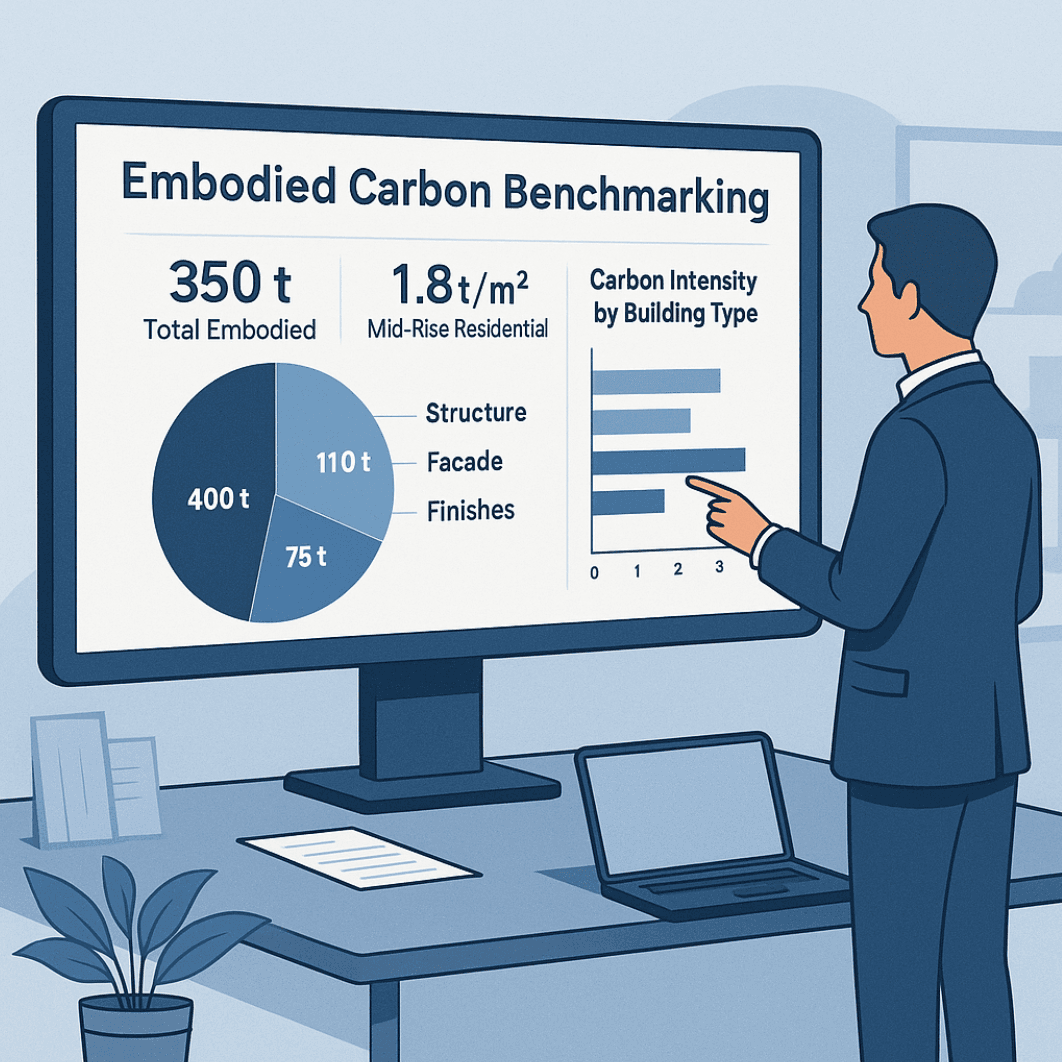Embodied carbon has become central to sustainable construction, yet gathering and comparing that data across multiple projects has always been a daunting, resource heavy task. Teams spend hours mapping quantity take offs to carbon factors, engage costly consultants and still often receive insights too late to influence design or procurement. Nulla changes everything. By automating the entire mapping process, Nulla turns weeks of manual work and significant fees into a few hours of effortless analysis, democratising embodied carbon benchmarking for consultants, developers and builders alike.
1. How Nulla Transforms the BAU of Benchmarking
Traditional embodied carbon benchmarking involves wrestling with tedious spreadsheets and manual PDF exports. Every line item in a quantity take off required expert mapping to carbon coefficients, often involving ambiguous entries and best guess proxies. Teams waited weeks for results, incurring high consulting fees and still struggling to align around clear metrics.
Nulla completely transforms this process. Instead of wrestling with raw data, users upload BOQ or quantity take off files in any common format and let Nulla’s AI driven engine take over. Within 30 minutes, you'll receive:
• A unified emissions dashboard that covers single projects or entire portfolios, replacing fragmented reports with clear, consolidated insights
• Full auditable material mapping and calculation logic, ready for review
• Detailed material breakdowns that show each material’s kgCO₂-eq, automatically highlighting carbon hotspots without manual calculations
• Benchmark comparisons against industry standards and EPDs, enabling side-by-side analysis at the click of a button
This transformation slashes turnaround time by up to 80 percent, cuts assessment costs by as much as 70 percent, and empowers teams to shift focus from data entry to strategic action. Sustainability consultants expand their scope without adding headcount. Developers gain real-time visibility across all sites and design iterations. Builders run mass assessments without external advisors or delayed timelines. In every case, Nulla revolutionises how embodied carbon benchmarking is done.

2. Case Study: Benchmarking a Mid-Rise Residential Building
A regional builder managing a mid-rise apartment project once faced a four to six week engagement with an external consultant at around $15,000 to establish a single carbon benchmark. With Nulla the process takes under 2 days and a fraction of the cost:
• The project’s BOQ is uploaded with no manual formatting required
• Nulla’s AI matches every line item to its carbon factor, flags uncertainties for review and applies proxies where needed
• A material hotspot chart ranks materials by impact
• Benchmarking against two completed sites highlights a 12 percent higher result caused by a heavier structural frame
Armed with these insights the builder can explore low-carbon material alternatives, negotiate with suppliers, set internal reduction targets and run live what-if scenarios all before contracts are signed. The result is a clear, data-driven roadmap for carbon reduction delivered in hours, not weeks.
3. What This New Opportunity Means to the Industry
1. Comprehensive Portfolio Insights:
With Nula, companies can benchmark entire portfolios simultaneously, something previously unimaginable. This means builders and developers can identify trends, compare projects, and establish internal benchmarks that reflect real world performance, not just industry averages. This level of insight allows for better strategic planning and more informed decision making.
2. Early Stage Decision Making:
Traditionally, carbon data often arrived too late in the design process to influence major decisions. Nula’s speed means that carbon insights are available right from the earliest stages of design and procurement. Teams can explore low-carbon alternatives and optimise specifications before any material is ordered.
3. Cost Efficiency and Resource Allocation:
The automation Nula provides reduces the need for expensive consulting engagements and frees up internal teams to focus on more valuable tasks. This cost efficiency allows companies to reinvest in further sustainability initiatives or other strategic priorities.
4. Enhanced Collaboration and Transparency:
With clear, data-driven benchmarks, Nula fosters better collaboration among stakeholders. Builders, developers, consultants, and investors can all align on the same set of metrics, leading to more transparent communication and streamlined decision-making processes.
5. Continuous Improvement and Innovation:
As Nulla enables continuous benchmarking, companies can track progress over time, identify successful strategies, and stay ahead of regulatory changes. This ongoing improvement encourages innovation and helps set new industry standards for sustainability.
Embracing Nulla in Your Workflow
By embracing automated, large scale benchmarking, the industry can transform embodied carbon from an afterthought into a guiding metric that shapes every project. Nulla empowers you to turn data into action, unlock new sustainability opportunities and lead the way toward a lower-carbon built environment. Explore our detailed guides and additional case studies on the LCMH resource page today.
Try Nulla now - streamline your project benchmarking in minutes.





